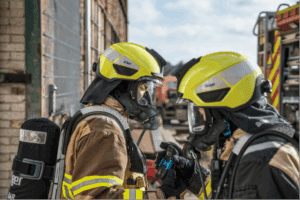Disastrous flooding in the US state of Texas is fully expected to get significantly worse over the coming days, with waters continuing to rise following a storm of historic proportions.
A record 30 inches of rain – 75cm – has already fallen on the city of Houston at time of writing (29th August 2017) as a result of Hurricane Harvey, which has transformed roads into rivers.
However, it’s fully expected to get a lot worse before it gets better, as forecasters are predicting that the total rainfall could potentially almost double by the end of the week coming.
The levels of crisis have prompted US President Donald Trump to get involved, with the Republican promising swift action in order to try and help those affected. Mr Trump is set to visit Texas on the 29th August, and has also signed off an emergency declaration for Louisiana, with the neighbouring state at risk of being hit by similar floods.
The hurricane itself, Harvey, was diagnosed as a category-four hurricane on the 25th August, with officials declaring the floods as unprecedented. Shortly afterwards, it was downgraded to a tropical storm.
Over 3000 people have been rescued both in and around Houston, which is the fourth-largest city in the US, with helicopters picking up victims from rooftops. Around 6.6 million people live in the metropolitan area of the city.
Despite the heroic efforts of the emergency services, at least nine people have been reported as dead following incidents directly related to the storm.
Governor of Texas Greg Abbott has now activated the whole Texas National Guard in order to help the national forces in search and rescue operations, with the guard containing around 12,000 ‘civilian soldiers’, as the area itself is expected to have had a whole year’s rainfall within the space of seven days.
Officials are expecting at least half a million disaster victims to seek out assistance within Texas, while 30,000 people are set to be housed in emergency shelters.
In an attempt to combat the floods, army engineers have started to release water from two dams which control water flowing along a major river into the centre of Houston.
The reasoning behind opening the Addicks and Barker dams is to stop water flowing into neighbouring communities according to officials, however this in itself is a risk as it could cause additional damage down the Buffalo Bayou.
According to the National Weather Service, the worst of the floods are expected to hit on Wednesday the 30th and Thursday the 31st, however there remains a significant amount of uncertainty regarding the storm’s path.
Both of Houston’s main airports have been shut due to runways being completely flooded, while many schools are also closed.
Houston floods expected to worsen as flooding from Harvey ramps up
About Fire Buyer
International Fire Buyer is the leading authority in global passive and active fire content, delivering expert news, in-depth articles, exclusive interviews, and industry insights across print, digital, and event platforms. Published 10 times a year, the magazine is a trusted resource for professionals seeking updates and analysis on the latest developments in the fire sector.
To submit an article, or for sponsorship opportunities, please contact our team below.
Read the Latest Issue
Follow us on X
Follow us on X
Click HereFollow us on LinkedIn
Follow us on LinkedIn
Click HereAdvertise here
Reach decision makers and amplify your marketing




































